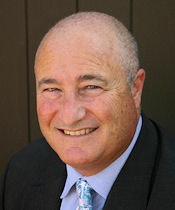
The rapid expansion of billing codes that enable interventional radiology ambulatory surgical centers (irASCs) to collect for outpatient interventional procedures has brought, and will continue to bring, expanding opportunities for interventional radiologists and their groups to profit from ownership of these facilities.
It's no secret that procedure-performing physicians have legally and ethically profited from facility ownership for decades. Although current law hampers physician-owned hospitals, physician-owned ambulatory surgical centers (ASCs) of all stripes continue to thrive.
 Attorney Mark Weiss.
Attorney Mark Weiss.The exploding growth of ASC opportunity is fueled by technology, price, and value: Technology is allowing more procedures to be performed on an outpatient basis. Procedures can be performed in an ASC for far lower prices. Also, due to their lower cost structure and the ability to provide a more patient-focused experience, ASCs provide greater value for patients (better experience plus lower co-pays), payors (lower prices plus better outcomes), and physician-owners (capturing the facility fee plus greater control over scheduling plus increased professional freedom).
The future is clear: Any procedure that can be performed outside of a hospital will be performed outside of a hospital.
For interventional radiology procedures, that means they will be performed in irASCs, whether you own them and share in the facility fee in addition to your professional fee, or whether someone else owns them, takes the facility fee, and leaves you to collect the professional fee component only.
New world for interventional radiologists
Although there are many factors involved in developing and operating an ASC of any sort, the concept makes no sense unless there's a way for the facility to bill and collect for procedures -- that is, for facility fees separate from and in addition to physicians' professional fees.
ASC reimbursement from Medicare and from other payors is based on current procedural terminology (CPT) coded facility fees, which, depending on the procedure, can be quite significant.
For many decades, gastroenterologists, ophthalmologists, and other proceduralists have been able to take advantage of ASC ownership because there were CPT codes that matched their procedures to ASC facility fees. However, there were no such CPT code matches enabling interventional radiology procedures to generate ASC collections.
That's all changed.
IR code explosion
As recently as 2015, there were only approximately 30 interventional radiology procedure CPT codes on Medicare's Ambulatory Surgical Center Fee Schedule that would permit an irASC to collect a facility fee. Commercial payors follow Medicare's lead.
 Cecilia Kronawitter, president of HDA Enterprises.
Cecilia Kronawitter, president of HDA Enterprises.As a result, for all practical purposes, it didn't make sense for interventional radiologists or radiology groups to develop an irASC. It made far more sense to perform those outpatient procedures that could safely be performed in a physician office in that setting, and to perform all others at the hospital.
However, effective for 2016, Medicare expanded the ASC Fee Schedule, adding approximately 117 new interventional radiology procedure codes. In addition, for 2017, more than 86 additional codes were added to the list, creating a total of over 230 CPT codes that support the collection of irASC facility fees.
Note that in each instance, the irASC fee is collected by the facility in addition to the professional fee for the interventional radiologist's services that is collected by the physician or the radiology group.
As of the writing of this article, Medicare hasn't yet released its 2018 ASC Fee Schedule; however, we expect to see additional interventional procedure facility codes on the list.
Facility fees for irASC cases can run well into the four figures per procedure. For example, CPT code 33213, "insertion of pacemaker pulse generator only, with existing dual leads," generates Medicare irASC reimbursement (i.e., the facility fee alone, which is paid in addition to all physician fees) of more than $7,600. That same procedure performed in a physician office would yield a Medicare Office-Based Surgery payment of approximately $350.
Also, CPT code 33210, "insertion or replacement of temporary transvenous single-chamber cardiac electrode," generates Medicare irASC reimbursement of more than $3,600, versus a little over $170 in an office setting. See the following table for some additional examples.
| irASC vs. office-based fees | |||||
| CPT code | Description | irASC facility fee | Office-based fee | ||
| 0200T | Percutaneous sacral augmentation | $2,647.20 | No fee | ||
| 19100 | Biopsy of breast | $520.88 | $153.60 | ||
| 33218 | Repair of single transvenous electrode | $1,381.91 | $404.00 | ||
| 36261 | Revision of infusion pump | $2,151.79 | $336.99 | ||
| 47556 | Biliary endoscopy | $3,001.69 | $433.89 | ||
| 62365 | Removal of spinal infusion pump | $1,884.99 | $308.64 | ||
Although exact prices can't be discussed due to antitrust restrictions, some interventional radiology procedures that would result in a hospital charge of around $25,000 (exclusive of any physician fee) can be performed in an irASC setting for an all-inclusive (facility plus all physicians) fee in the range of $10,000 to $15,000 and still be quite profitable to the irASC due to the much lower surgical center cost structure of an independent, freestanding facility.
It's easy to see that this new economic picture yields a rare triple win: Payors win as a result of lower pricing. Patients win both from lower pricing and the improved "customer experience" of an ambulatory setting. And physicians -- that is, interventional radiologists and their groups -- win due to the ability to capture the irASC's profits.
The irASC formation process
Forming an irASC starts with an initial analysis of goals, structure, and potential profitability.
Who will own the center? Individual interventional radiologists? Interventional radiologists and other interventional specialists? A radiology group? Will the facility be a joint venture with a hospital?
As should be expected in connection with any healthcare business venture, there are significant compliance issues involved, including but not limited to issues under the federal antikickback statute and state law counterparts that must be taken into account, both in terms of the facility's organizational structure and its ongoing operations.
Just as with the design of the irASC as a legal entity, developing an irASC requires a high level of expertise with respect to physical design: architectural, interior design, and construction sensitivity due to the unique nature of the facility and required compliance with federal, state, and accreditation standards. It requires a coordinated approach between the client, a development firm with specific irASC experience, a management firm tasked with day-to-day business operations, and a deal-oriented healthcare legal counsel experienced in the irASC space.
In summary, the rapid expansion in the number of irASC billing codes is creating expanding opportunities for interventional radiologists and radiology groups to profit from irASC ownership. With careful analysis and planning, investment in a properly structured and designed irASC can deliver a tremendous and ongoing financial return.
Mark F. Weiss is an attorney who specializes in the business and legal issues affecting physicians, physician groups, and physician-owned facilities on a national basis, with offices in Dallas, Los Angeles, and Santa Barbara, CA, representing clients across the country. He can be reached at [email protected].
Cecilia Kronawitter is president of HDA Enterprises of Delray Beach, FL, which designs, develops, manages, and markets healthcare facilities. She can be reached at [email protected].



















